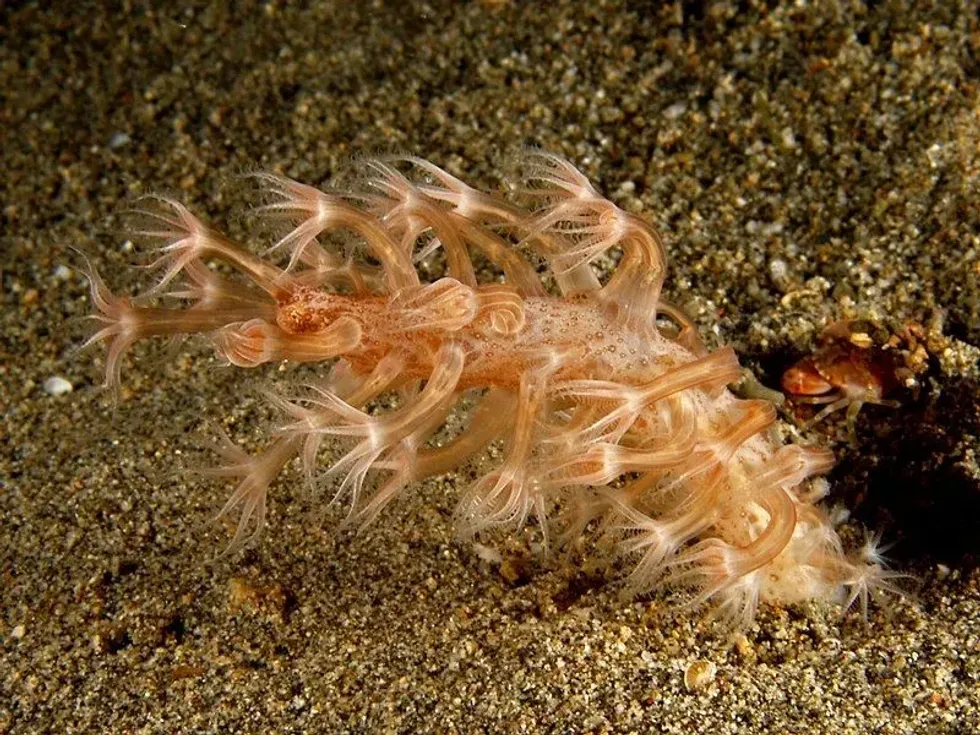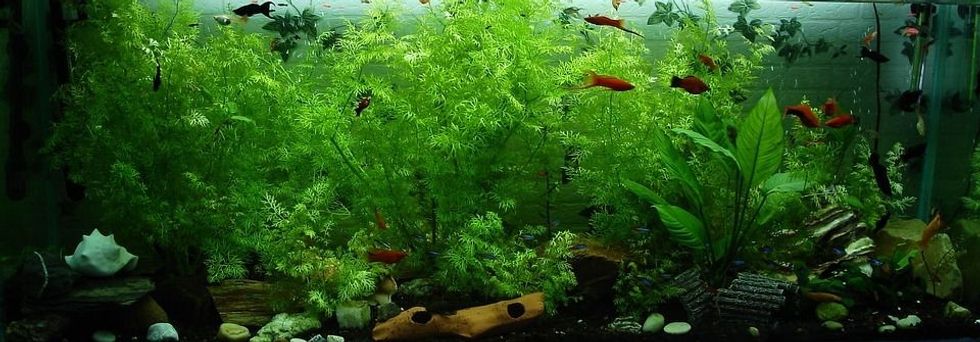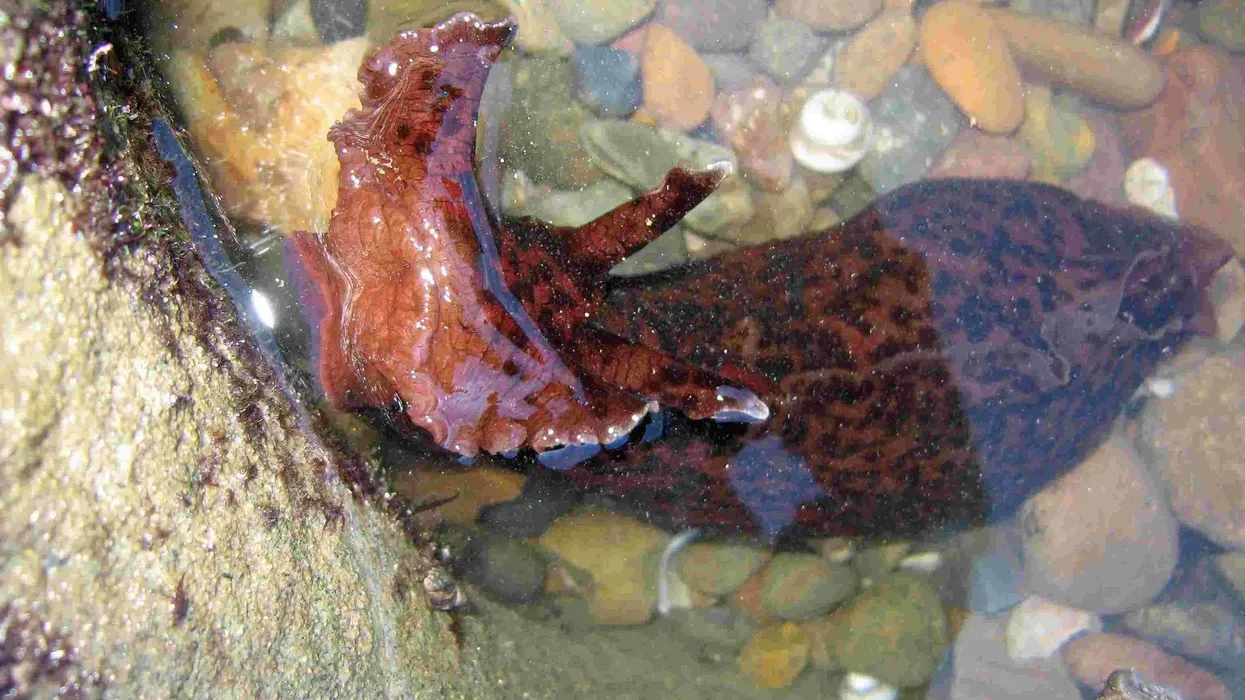Let's take an exciting dive into the Pacific ocean today! Orange sea pen, a bright and beautiful coral found in various seas near Ireland, Scotland, California, and many more, resembles quill pens.
They consist of a colony of small creatures named polyps resembling mini anemones. Often found in deep and shallow parts of oceans, the sea pens feed on plankton and use unique polyps named autozooids which are specialized for feeding.
One polyp loses its tentacles to develop into the rachis. Distinct branches grow from this rachis. The bottom half of the central rod is called a peduncle - sea pens use peduncles and anchors themselves into the soft seabed as if an old-fashioned quill stuck in the seabed.
For more relatable content, check out these moonfish facts and billfish facts for kids.
Sea Pen Interesting Facts
What type of animal is a sea pen?
Sea pens are colonial invertebrate animal species consisting of a colony of polyps (tentacles) like corals and anemones.
What class of animal does a sea pen belong to?
Sea pens belong to a class Anthozoa from the Animal kingdom.
How many sea pens are there in the world?
The exact count of the sea pens is Unknown. However, there are 300 species of sea pens worldwide.
Where does a sea pen live?
A sea pen lives in the oceans around the world.
What is a sea pen's habitat?
A sea pen's habitat range is on soft sand in shallow and deep waters of a sea or ocean. They prefer deep waters to live in.
Who do sea pens live with?
A colony of these sea pens lives with other coral and anemones species.
How long does a sea pen live?
A sea pen coral lives around 100 years or more
How do they reproduce?
Each colony is either male or female; however, more are females. First, autozooids feed and produce eggs and sperm. Next, these gametes are expelled through the mouth into the open water, where fertilization takes place. Finally, the free-swimming larva settles to the bottom and metamorphoses to form the axial polyp of a new colony.
What is their conservation status?
Pennatula aculeata, a particular species of the order Pennatulacea, is listed as Data Deficient on the IUCN Red List classification. However, they have a wide distribution in their habitat range; hence they are not endangered.
Sea Pen Fun Facts
What do sea pens look like?

Sea pens are beautiful corals often found in pet shops for aquariums. These corals have calcium carbonate in their upper central rod stem called the rachis, which bears tentacles named polyps.
How cute are they?
Sea pens are very colorful marine animals with feather-like tentacles and glow in the dark, which looks cute and acts as a defense mechanism against predators.
How do they communicate?
As a defense against their predators like sea slugs and snails, most sea pens luminesce or glow when they are touched or otherwise stimulated. This is how they communicate when threatened by other marine creatures.
How big is a sea pen?
Sea pens, 78 in (6.5 ft), are more than twice the length of a coral snake which is 36 in (3 ft).
How fast can a sea pen move?
There is limited information about their speed. But these creatures with a colony of polyps anchor themselves with their bulb-like shape into soft bottoms like sand or mud. But they can free themselves and move around in the mud.
How much does a sea pen weigh?
The exact weight of a sea pen is not available as it varies for all creatures.
What are the male and female names of the species?
The are no male and female names for sea pens belonging to order Pennatulacea. Nevertheless, researchers have found some hermaphrodite sea pens in the oceans.
What would you call a baby sea pen?
A baby sea pen is called a primary polyp. This primary polyp buds off into daughter polyps, and the sea pen grows from these polyps. Each polyp has eight tentacles.
What do they eat?
These are the species feeding on plankton (their favorite food) and organic matter found by their polyps. These polyps are also called autozooids.
They usually position themselves favorably in the path of currents meaning a steady flow of planktons, their primary food. They are diurnal and hide themselves during the day under the bottom of the ocean but come out at night to capture their food.
The red star, the leather star, and three types of nudibranchs called striped nudibranchs prey on sea pens.
Are they poisonous?
No, these animals are not poisonous, but the colony of these vibrant animals shines with dark orange, yellow, white, bright brown, and red colors at night. However, they do become bioluminescent emitting light which makes them look poisonous.
Would they make a good pet?
Sea pen, this beautiful Pennatulacea, is sometimes taken for the live aquarium trade. However, they usually don't do well in captivity and eventually die of starvation due to a lack of food similar to the one in the oceans.
In addition, as they hide during the day and come out at night, they are not as popular to be the ideal pets.
Did you know...
Sea pens may move around from an old spot to a new spot even if they are anchored into the ground (with the bottom half of their stem) if they need to.
If in case a sea pen is disturbed, it can force water out of the colony of polyps and retreats itself into its bulbous foot, which is the other end of the central rod or stem and that is buried into the ground.
Sea pens have many similar features as soft corals. The most significant difference is in sea pen's and soft coral's habitats. Soft corals will attach to rigid substrates, while sea pens attach themselves with their bulb-like shape into soft bottoms like sand.
Sea pens are called octocorals as all the polyps have eight tentacles each!
What do sea pens do?
The work that this wonderful creature does is vital. It anchors itself to the soft sand and acts as an indicator of the quality of mud habitats and associated communities.
What are sea pen adaptations?
The shape of sea pens is an adaptation to maximize the prey capture rate of a colony while also helping to minimize the speed of turbulent water where these animals are commonly found.
Sea pens are the invertebrate animals that follow a diurnal pattern of expansion and contraction (open and feeding during the day, contracted below the sediments at night). They feed on planktons such as invertebrate larvae, ciliates, suspended detritus, rotifers, bacterioplankton, and probably phytoplankton as well.
These animals are adapted to a great self-defense mechanism of bioluminescence to protect themselves from potential predators like nudibranchs, sea slugs, juveniles, and snails.
Love to read about more such exciting and mesmerizing animals? Here at Kidadl, we have carefully created lots of interesting family-friendly animal facts for everyone to discover! Learn more about some other Anthozoa from our giant green anemone facts and fire coral facts pages.
You can even occupy yourself at home by coloring in one of our free printable Sea pen coloring pages.









